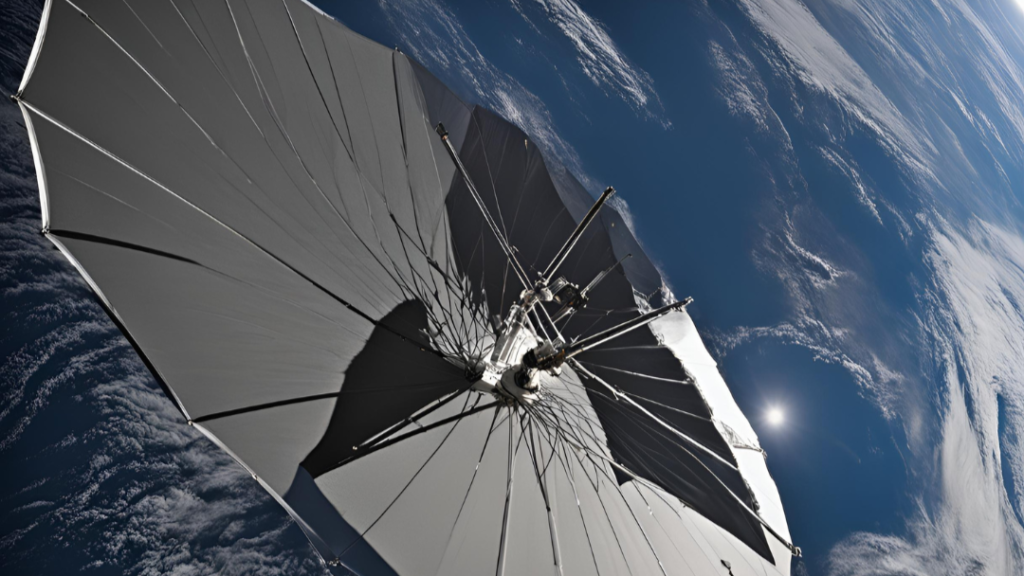The Space Umbrella
Imagine a future where we have a giant umbrella in space, shielding our planet from the Sun’s scorching rays. Sounds like science fiction, right? But this concept is being seriously considered as a solution to one of the biggest challenges humanity faces today: climate change.

Today, we’re diving into a fascinating topic that combines space technology and climate science—a proposed ‘space umbrella’ to help cool our planet. This concept isn’t just theoretical; it’s being explored by scientists right now, including a team from Israel’s Technion Institute of Technology.
The idea is simple yet ambitious: place a giant shield, or a series of smaller shields, in space to block a fraction of the Sun’s radiation. This project aims to reduce the amount of solar energy reaching Earth, thereby helping to mitigate global warming.
Let’s break down how this ‘space umbrella’ would work. The basic principle is to block or deflect around 1-2% of the Sun’s radiation. Now, you might think that’s a tiny amount, but even a small reduction in solar energy can significantly impact global temperatures.
This concept is a form of geoengineering. While it won’t solve the root causes of climate change, like greenhouse gas emissions, it could be a part of a broader strategy to manage the planet’s temperature.
The space umbrella would ideally be placed at the L1 Lagrange point, a spot between Earth and the Sun where the gravitational forces are balanced. This location allows the umbrella to stay in a fixed position relative to Earth
But deploying a the space umbrella isn’t as simple as it sounds. The shield needs to be massive—potentially covering an area the size of Argentina! Launching something this large from Earth is currently beyond our capabilities. However, scientists have proposed innovative solutions, like assembling the shield in space from smaller segments or using a captured asteroid as a counterweight.
Assembling the shield in space could solve the logistical challenges of launching large structures. The idea of using an asteroid as a counterweight is also fascinating. This approach could reduce the amount of material needed to be launched from Earth, making the project more feasible.
Now, let’s talk about the costs. Developing a prototype alone could require between $10 million and $20 million. The full-scale project would undoubtedly cost billions. Critics argue that these resources might be better spent on reducing emissions and investing in renewable energy.
Another concern is the potential unintended consequences. Blocking sunlight could disrupt ecosystems, affect weather patterns, and even alter global food production. Ethically, there’s also the question of who controls such a powerful tool and how it should be governed.
The space umbrella concept is undoubtedly a bold and innovative idea. While it may sound like a scene from a sci-fi movie, it highlights the lengths we might have to go to combat climate change. Whether this project becomes a reality or not, it underscores the urgent need for global action.
To understand dark-matter, let’s start with what we see in the universe: stars, planets, and galaxies. These visible objects make up just a tiny fraction of the universe’s total mass. Most of it, around 27%, is dark-matter. But what is it?
Dark-matter doesn’t emit, absorb, or reflect light, making it invisible and detectable only through its gravitational effects. Imagine a game of hide and seek, where the seeker can only find the hidden players by feeling their presence in the dark. This is similar to how scientists infer the existence of dark matter: by observing the gravitational forces it exerts on visible matter.